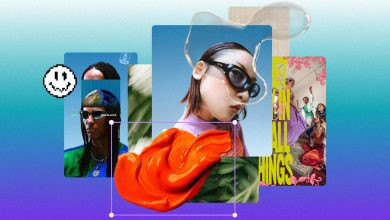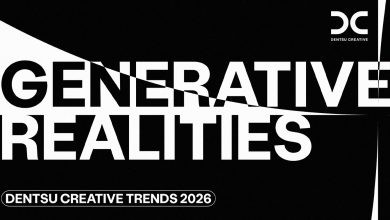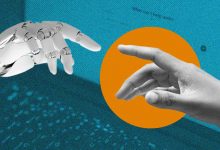MANILA, PHILIPPINES — In its fourth edition, CREATE Philippines, organized by the Center for International Trade Expositions and Missions (CITEM), presented Creative Futures, a two-day digital conference that celebrates the inherent creativity of Filipinos.
On June 28, adobo magazine took part in Creative Futures by gathering industry experts to discuss the importance of design and data, and how these were harnessed to improve the human experience inside historic Intramuros.
Using the COVID-19 PAALALABAS Communication Initiative as a case study, the roundtable discussion focused on human-centered techniques that can be applied to solve problems in a creative and innovative way.
The event was hosted by adobo owner, founder, and editor-in-chief Angel Guerrero. She was joined by the creative minds behind the PAALALABAS campaign, namely Atty. Guiller B. Asido, Administrator of the Intramuros Administration, Rhea Matute, Executive Director of the Design Center of the Philippines (DCP), Architect Royal Pineda, Co-Chairman of the Design Advisory Council (DAC), Dan Matutina, Vice President of the Communication Design Association of the Philippines (CDAP), and Kristine Layaoen, Executive Research Director and Principal Partner of Curiosity Design Research.
Beginning the discussion, Atty. Guiller presented the Intramuros story. As part of his efforts to apply the concept of design thinking within the walled city, Atty. Guiller explained, “Here in Intramuros, design was not only used as a tool, but also as framework for solutions. When we came in four years ago, we decided to basically identify and set it in four pillars. We had to identify how to treat Intramuros as a historic place, and also go into the perspective of setting its value. Then we went to the critical aspect of setting the narrative, and from there, we fulfilled the mandate of telling everyone about the Intramuros story.”
“When it came to setting policies, we decided that we should be more creative in the approach. This is how we want to tell the story of the people and the place, both past and present.”
In line with this desire, Atty. Guiller allowed Intramuros to be used as the “city lab” for PAALALABAS, a unique COVID-19 communication initiative that was launched in June. The campaign, a combination of the words paalala and labas, offers a “design solution” that aims to encourage Filipinos to practice more vigilant health and safety practices amid rising COVID-19 concerns.
Talking about the inspiration behind the campaign, Architect Royal shared, “At Design Advisory Council, we wanted to address the issue of the pandemic through design and innovation.”
“This nudge campaign is true to its essence and purpose; it’s an expression of love to our fellow people. Design-wise, I’d say that the whole team was inspired by our hearts as Filipinos. Truly, PAALALABAS is a campaign our countrymen can easily relate to. A large part of it, if not the entirety, is because of the striking visual cues and cleverly crafted taglines.
Expounding on the visual language he created for PAALALABAS, Dan Matutina said, “During the conceptualization, we asked ourselves what single-minded message we could say to Filipinos to nudge them to make the right choice on health and safety.“
“This campaign is freedom laced with responsibility— for our families, our communities, and our kapwas,” Dan added. “To complement the nudging spirit behind PAALALABAS, we created a typeface that reflects the idea’s non-alarmist gesture.”
Rhea Matute, who was at the helm of the whole project together with Architect Royal, agreed that the campaign is critical but compassionate. According to her, “PAALALABAS is really inspired by the book of Richard Thaler about behavioral economics.”
“Turning the nudge into the PAALALABAS look required two elements: drawing attention to the action choice, hence, the use of ‘alert’ inspired colors, and keeping it salient, hence, the use of familiar words and symbols.”
To validate the campaign, research was conducted across Metro Manila, Davao, Cebu, and Baguio. Through a series of focus group discussions, Kristine Layaoen and her team were able to evaluate the campaign materials and give their recommendations.
Kristine shared her research findings and said, “More than a year after the pandemic started, some FGD participants actually admitted that hey have begun relaxing protocols for various reasons.”
“In summary of the research findings, the participants showed a high level of interest in PAALALABAS because of its wit, novelty, and uniqueness attributed to its authoritative yet caring tone in delivering a relevant message.
Following Kristine’s presentation, Rhea discussed the campaign rollout plan with an emphasis that PAALALABAS starts at the grassroots level, with the point of contact, such as signages, in places where the people gather and congregate.
Before leading the audience to the Q&A portion, Angel expressed her very own sentiments. “This campaign is the outcome of bayanihan, that fundamental aspect of Filipino culture where we work together as a community to achieve a common goal.”
She then proceeded to extend her gratitude to some of the collaborators of the campaign, such as Jao Bautista, who named the nudge, Aaron Amar, who developed the custom typeface, and Birdie Salva, who was Kristine’s research partner.
“Through PAALALABAS, we celebrate the same things we see in creative futures– design, collaboration, and community,” Angel said in conclusion, “This is our paalalabas: Mag-mask, mag-distancing, magtulungan.”








